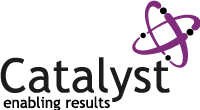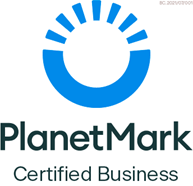The term ‘Lean’ was coined by John Krafcik in 1988 to describe a way of working that “uses less of everything”. The Lean methods and concepts themselves predate the term, rooted as they are in the Toyota Production System philosophies and practices that took decades to develop and refine. Still, whatever the sector, size or style of organisation, there are ample opportunities to apply lean process improvement today.
It’s important to note that there’s more to lean process improvement than tools and techniques. Lean is a philosophy and a mindset. It’s not about just generating revenue, reducing costs or cutting to the bone. Leaders of lean organisations are focussed on adding value to their customers, to their society and to the economy, and they want to make the work ‘easy’ for their people. It is said that Sakichi Toyoda – who founded the Toyota group and really did begin it all – developed the power loom because he wanted to improve life for the women of his village (including his mother) employed to weave textiles using hand looms.
Here’s a look at how lean process improvement principles, as well as tools and techniques, can be applied to shape ways of working that use less of everything – less effort, less inventory, less resource and less time.
Identifying value for the customer
Lean process improvement requires a truly Customer Centric approach – If we don’t know what adds value for a customer how can we be sure we’re delivering the right things in the right ways? Are all the things that we’re doing adding value, or contributing to things that add value for customers? If not why are we doing them? And are we focussing lean process improvement activities appropriately? Without this understanding we’re at risk of stripping out value adding aspects, making things worse for the customer rather than better, or wasting valuable time and effort by focussing on the wrong things. The Lean definition of value is what the customer is prepared to pay for – their perception of worth. It is well worth taking the time to understand it.

Seeing the process
Mapping the ‘value stream’ (how value gets delivered to the customer, from beginning to end) is the next lean process improvement step. This is simple but effective – when all of the activities or steps involved in the process have been mapped out they can be understood more clearly. And when they are understood they can be challenged and improved. When groups of people come together to map processes in this way there are so many ‘Aha!’ moments – steps that have been carried out for a long time ‘just because we’ve always done it that way’ get called in to question, rework loops, delays and the number of ‘hands’ involved in a process are highlighted.
The ‘Value Add Analysis’ technique can support (and generate more) ‘Aha’ moments. If a step adds value it must meet all three of the criteria below. Another word for a non value adding activity is waste. This technique can result in less waste, less effort and less time to deliver a process.
- The customer is prepared to pay for it
- it physically changes the ‘thing’ that is being processed
- It is done right first time
Making the value flow
In addition to identifying waste, focussing on how value ‘flows’ through the process can highlight bottlenecks and blockages – things that are preventing smooth, uninterrupted delivery. Looking at where queues of work are building up in front of process steps can highlight opportunities to address the constraints and release the flow. For example, if every complaint that is received within a department needs to be actioned by the Manager, but the Manager is not available, a queue of complaints requiring responses will build up, and complaining customers may become even more dissatisfied. How about equipping members of the team to resolve complaints? Everyone will benefit from a faster response, a reduction in skills waste and the empowerment of process operators – a lean process improvement and an example of the lean philosophy in action.
Understanding demand and ‘pull’
In addition to understanding what customers perceive as value adding, lean process improvement involves an understanding of customer demand for services and products and for operations to be managed in sync with the rate of demand.
Producing in advance and stockpiling is unnecessary where a ‘pull’ system is operated – the customer pulls the value through the process when they need it, and in the quantity needed. The result is less inventory, less space, less waste and easier planning. In Toyota for example, the pull comes from customer demand in the form of a vehicle order. Closer to home, Netflix allows us to pull what we want to watch, whereas channels on our TVs push their programmes to us.

Involving your experts in lean process improvement – Achieving perfection
Some find the language used in lean process improvement a little off putting and ‘technical’ (Kanbans, value streams, gemba etc). It doesn’t feel conducive to creativity and imagination – but it actually really is!
Taiichi Ohno (known as the Father of the Toyota Production System) said, “The Toyota style is not to create results by working hard. It is a system that says there is no limit to people’s creativity. People don’t go to Toyota to ‘work’, they go there to ‘think’. Wow!
Ohno actively encouraged those involved in lean process improvement to go to the Gemba (the place the work gets done) to see the work, and to engage the people working there in improvement. The knowledge, experience and creativity of people operating a process is huge – what a waste if it goes untapped.
Perfection is the final principle of lean process improvement. This is something to be pursued continuously. Taiichi Ohno (who really did have a way with words) was adamant that workers should always be on the look-out for difficult, “tedious and boring” things that could be improved. “No one has more trouble than the person who claims to have no trouble”, he said. The opportunities for lean process improvement are everywhere. Less talk, more action!
Please contact us if you wish to learn more about our Lean training programmes.
If you would like to learn more about how our consulting services could help your business become more lean, please click here.
Jo is a motivated and energetic business improver with extensive experience in developing and deploying Continuous Improvement, Lean Six Sigma, ISO and Excellence strategies across a broad range of organisations and sectors.





